
John Nash's Genius Is Extraordinary. Recovering From Schizophrenia Is Anything But.
The end of "A Beautiful Mind," the Oscar-nominated movie based loosely on the life of Nobel Prize winner John Forbes Nash Jr., depicts the Princeton mathematician's emergence from the stranglehold of paranoid schizophrenia, the most feared and disabling of mental illnesses. Moviegoers who have watched the cinematic metamorphosis of actor Russell Crowe from the disheveled genius who furiously covers his office walls with delusional scribblings to the silver-haired academic perfectly at home in the rarefied company of fellow laureates in Stockholm might assume that Nash's recovery from three decades of psychosis is unique.
But mental health experts say that while Nash's life is undeniably remarkable, his gradual recovery from schizophrenia is not.
That contention is likely to surprise many people, including some psychiatrists, who continue to believe the theory, promulgated a century ago by Sigmund Freud and his contemporaries, that the serious thought and mood disorder is a relentless, degenerative illness that robs victims of social and intellectual function, invariably dooming them to a miserable life in a homeless shelter, a prison cell or, at best, a group home.
Schizophrenia Recovery Not That Unusual
Psychiatric researchers who have tracked patients after they left mental hospitals, as well as a growing number of recovered patients who have banded together to form a mental health consumer movement, contend that recovery of the kind Nash experienced is not rare.
"The stereotype everyone has of this disease is that there's no such thing as recovery," said Washington psychiatrist E. Fuller Torrey, who has written extensively about schizophrenia, an illness he has studied for decades and one that has afflicted his younger sister for nearly half a century. "The fact is that recovery is more common than people have been led to believe. . . . But I don't think any of us know for sure how many people recover." (See also: Why Schizophrenia Patients Are Difficult to Treat.)
The notion that Nash's recovery is exceptional "is very pervasive even though the facts don't support it, because that's what generations of psychiatrists have been taught," said Daniel B. Fisher, a board-certified Massachusetts psychiatrist and activist who has fully recovered from schizophrenia for which he was hospitalized three times between the ages of 25 and 30.
"Many of us who have spoken about our recovery are confronted with the statement that you couldn't have been schizophrenic, you must have been misdiagnosed," added Fisher, 58, who holds a Ph.D. in biochemistry and went to medical school after his hospitalizations.
The belief that recovery from schizophrenia occurs only occasionally is belied by at least seven studies of patients who were followed for more than 20 years after their discharge from mental hospitals in the United States, Western Europe, and Japan. In papers published between 1972 and 1995, researchers found that between 46 and 68 percent of patients had either fully recovered they had no symptoms of mental illness, took no psychiatric medication, worked and had normal relationships or were, like John Nash, significantly improved but impaired in one area of functioning.
Although the patients received a variety of treatments, researchers speculate that the improvement may reflect both an ability to manage illness that accompanies age coupled with the natural decline, beginning in the mid-forties, in the levels of brain chemicals that may be linked to schizophrenia.
"One reason nobody knows about recovery is that most folks don't tell anybody because the stigma is too great," said Frederick J. Frese III, 61, who was hospitalized 10 times for paranoid schizophrenia in his twenties and thirties.
Despite his illness, Frese, who considers himself "definitely not fully recovered but in pretty good shape," earned a doctorate in psychology and was, for 15 years, director of psychology at Western Reserve Psychiatric Hospital in Ohio, the state's largest mental hospital. Frese holds faculty appointments at Case Western Reserve University and Northern Ohio Universities College of Medicine.
He has been married for 25 years and is the father of four children as well as past president of the National Mental Health Consumers Association. These achievements are hardly consistent with the prognosis Frese was given at 27, when a psychiatrist told him he had a "degenerative brain disorder" and would probably spend the rest of his life in the state mental hospital to which he had recently been committed.
Not Everybody Recovers From Schizophrenia
No mental health expert nor any of the eight recovered schizophrenia patients interviewed for this story would suggest that recovery or even marked improvement is possible for all the 2.2 million Americans afflicted with the confounding illness that typically strikes in late adolescence or early adulthood.
Sometimes schizophrenia, which is believed to result from an elusive combination of biological and environmental factors, is simply too severe. In other cases medications have little or no effect, leaving people vulnerable to suicide, which claims more than 10 percent of those diagnosed, according to epidemiological studies.
For others, mental illness is complicated by other serious problems: substance abuse, homelessness, poverty and an increasingly dysfunctional mental health system that favors 10-minute monthly medication checks, which are covered by insurance, over more effective but time-consuming forms of support, which are not.
The improvement seen in many schizophrenia patients as they reach their fifties and sixties generally affects only the most acute psychotic symptoms such as vivid hallucinations and imaginary voices. Patients rarely revert spontaneously to the way they were before they got sick, experts say, and many in whom the disease burns out are left with the emotional flatness and extreme apathy that also characterize schizophrenia.
While a growing number of mental health workers agree that recovery occurs, there is no consensus on how to define or measure it. Academic researchers typically adhere to a strict definition of recovery as a return to normal functioning without reliance on psychiatric drugs. Others, many of them ex-patients, embrace a more elastic definition that would encompass people like Fred Frese and John Nash, who continue to have symptoms they have learned to manage.
"I'd say there's a gradation of severity of illness and a gradation of recovery," said Francine Cournos, a professor of psychiatry at Columbia University who directs a clinic in Manhattan for people with severe mental illness. "The number of people who wind up completely symptom-free and without relapse is probably small. But everyone we treat we can help."
A Bleak Prognosis
In 1972, Swiss psychiatrist Manfred Bleuler published a landmark study that appeared to refute the teachings of his eminent father, Eugen Bleuler, who in 1908 coined the term schizophrenia. The elder Bleuler, an influential colleague of Freud's, believed that schizophrenia had an inexorable downhill course, much like premature dementia.
His son, curious about the natural history of the disease, tracked down 208 patients who had been discharged from one hospital an average of 20 years earlier. Manfred Bleuler found that 20 percent were fully recovered, while another 30 percent were greatly improved. Within a few years, research teams in other countries essentially replicated his findings.
In 1987, psychologist Courtenay M. Harding, then at the Yale University School of Medicine, published a series of rigorous studies involving 269 former residents of the back wards of Vermont's only state mental hospital, where they had spent years. Widely considered to have been the sickest patients in the hospital, they had participated in a 10-year model rehabilitation program that included housing in the community, training in jobs and social skills and individualized treatment.
Two decades after they completed the program, 97 percent of the patients were interviewed by researchers. Harding, a former psychiatric nurse who expected only modest improvement, said she was stunned to discover that about 62 percent were judged by researchers to be either fully recovered they took no medication and were indistinguishable from people who had no diagnosable mental illness or functioned well but had not recovered in one area. (They took medication or heard voices.) A study comparing the Vermont patients to a matched group in Maine, a state with much more parsimonious mental health services, found that 49 percent of the Maine patients had recovered or improved significantly.
So why has the almost universally gloomy prognosis for schizophrenia persisted in the face of convincing empirical evidence to the contrary?
"Psychiatry has always clung to a narrow medical model," observed Harding, who directs Boston University's Institute for the Study of Human Resilience. "Psychiatric dictionaries still do not have a definition of recovery," but speak instead of remission, which "carries the heavy time bomb of impending illness," she observed.
Columbia's Francine Cournos, an internist as well as a psychiatrist, agrees. "A lot of research is done in academic settings, and a lot of people who get seen there are sicker," she said. "And if you're working in a state hospital, all you ever see are the sickest patients."
Psychiatrists traditionally have not made a distinction between symptoms and the ability to function, Cournos added. "It's important to remember that there is a difference between the two. We've had patients here who are very high-functioning and psychotic, including a woman who ran a very high-powered executive program but at work wouldn't write anything down. She coped by memorizing everything she had to do because it drowned out the voices."
Tale of Two Former Schizophrenia Patients
The lives of Dan Fisher and Moe Armstrong illustrate the possibilities of recovery from schizophrenia. The two men have a lot a lot in common: They are neighbors in Cambridge, Mass., they are the same age, they both work with psychiatric patients, are well-known mental health advocates and they both have been hospitalized for schizophrenia. By any measure, Fisher has recovered completely. Armstrong is the first to say he has not.
Fisher's unusual odyssey from schizophrenic to psychiatrist embodies the most optimistic vision of recovery.
For the past 28 years, Fisher said, he has taken no psychiatric medication. He has not been hospitalized since 1974, when he spent two weeks at Washington's Sibley Hospital. He has been married for 23 years, is the father of two teenagers and shuttles between a community mental health center where he has worked as a psychiatrist for 15 years and the National Empowerment Center, a nonprofit consumer organization he helped found a decade ago. A few weeks ago he attended a White House meeting on disability issues.
Fisher was first diagnosed with schizophrenia in 1969. Armed with an undergraduate degree from Princeton and a PhD in biochemistry from the University of Wisconsin, he was 25 and investigating dopamine and its role in schizophrenia at the National Institute of Mental Health when he suffered his first psychotic break.
"I put more and more energy into my work, and I literally felt that I was the chemical I was studying," said Fisher, who recalled that he was desperately unhappy and that his first marriage was unraveling. "And the more I believed my life was being run by chemicals, the more suicidal I felt." He was hospitalized briefly at Johns Hopkins Hospital, where his father was on the medical faculty, given Thorazine, a powerful antipsychotic, and soon returned to his lab.
The following year Fisher was hospitalized again, this time for four months at Bethesda Naval Hospital, across the street from his lab. A panel of five psychiatrists diagnosed him as schizophrenic and he left his job. After his discharge from Bethesda, Fisher decided that he had to make some radical changes. He jettisoned his once-promising career as a biochemist and decided, with the encouragement of his psychiatrist and his physician brother-in-law, to become a doctor so he could help people.
In 1976 Fisher graduated from George Washington University School of Medicine, then moved to Boston to complete a psychiatry residency at Harvard. He passed his board exams and began practicing at a state hospital and seeing private patients. In 1980 his career as a consumer advocate was launched when he disclosed his psychiatric history on a Boston TV talk show. A decade later he helped found the National Empowerment Center, a resource center for psychiatric patients funded by the federal Center for Mental Health Services.
"I'm sure it helped me that I came from a professional family and I was educated," Fisher said of the factors that led to his recovery. "What helped me recover was not drugs which were one tool I used it was people. I had a psychiatrist who always believed in me, and family and friends who stood by me. Changing my career and following my dream becoming a doctor was very important."
Moe Armstrong Eagle Scout, high school football star, decorated Marine has come a long way from the nomadic decade that began when he was 21, following his psychiatric discharge from the military after combat in Vietnam.
Between 1965 and 1975, Armstrong said, he lived on the streets of San Francisco, in the rugged mountains of Colombia and in his parents' house in southern Illinois, "where I wore a housecoat and told everyone I was St. Francis."
He received no treatment but developed an addiction to alcohol and drugs.
In the mid-1970s, Armstrong sought mental health treatment through the Veterans Administration. He managed to stop drinking and using drugs and moved to New Mexico, where he graduated from college, earned a master's degree and became known as a mental health consumer advocate.
In 1993 he moved to Boston and became director of consumer affairs for a nonprofit company that provides services to the mentally ill. Six years ago he met his fourth wife, who has also been diagnosed with schizophrenia; the couple lives in an apartment they bought several years ago.
For Armstrong, every day is a struggle. "I have to continually watch myself," said Armstrong, who has taken pains to arrange his life in a way that minimizes the chance of a relapse. He takes antipsychotic medication, eschews movies because they often make him feel "over-amped" and tries to be in "supportive, gentle, loving environments."
"I have many more limitations than other people, and that's very hard," Armstrong said.
"And I had to give up the notion that I would be Moe Armstrong, career soldier, which is what I wanted to be. I think I've recovered as much as I have because I'm still the guy that's the scout, looking for the way out."
Source: Washington Post
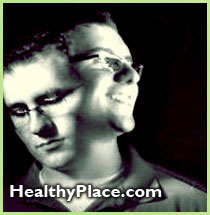 Until recently, mood stabilizers could be summed up in a single word--lithium, in use since the 1960s to tame mania. But over the past decade research has additionally demonstrated the effectiveness of divalproex sodium (Depakote) and lamotrigine (Lamictal), drugs that were initially developed for use as anticonvulsants in seizure disorders. Divalproex sodium has been approved for use as a mood stabilizer in bipolar disorder for several years, while lamotrigine is currently undergoing clinical trials for such an application.
Until recently, mood stabilizers could be summed up in a single word--lithium, in use since the 1960s to tame mania. But over the past decade research has additionally demonstrated the effectiveness of divalproex sodium (Depakote) and lamotrigine (Lamictal), drugs that were initially developed for use as anticonvulsants in seizure disorders. Divalproex sodium has been approved for use as a mood stabilizer in bipolar disorder for several years, while lamotrigine is currently undergoing clinical trials for such an application. Anxiety in mothers during pregnancy is strongly linked to children having emotional and behavioral problems as they grow up, researchers say.
Anxiety in mothers during pregnancy is strongly linked to children having emotional and behavioral problems as they grow up, researchers say. Monoamine oxidase inhibitors (MAOIs) usually are not the first medications given for anxiety because they have serious side effects when combined with certain foods and/or medications. They are usually given to people with anxiety who:
Monoamine oxidase inhibitors (MAOIs) usually are not the first medications given for anxiety because they have serious side effects when combined with certain foods and/or medications. They are usually given to people with anxiety who: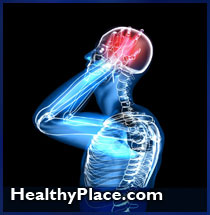 The depressed brain seems able to heal itself in the short run, although antidepressants may still be the key to long-term recovery from depression.
The depressed brain seems able to heal itself in the short run, although antidepressants may still be the key to long-term recovery from depression.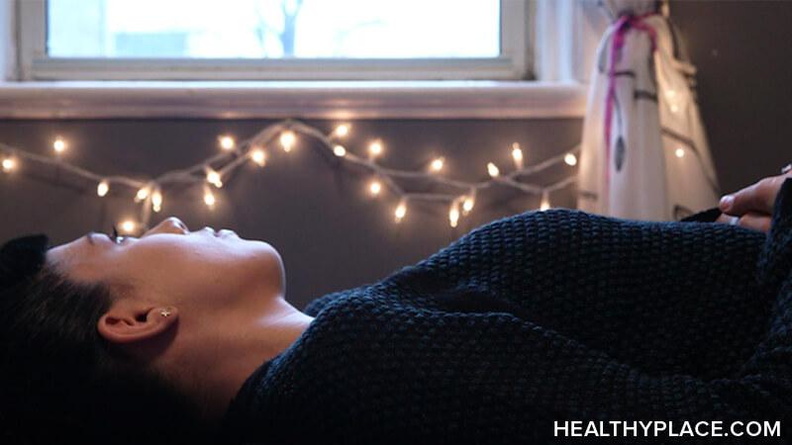
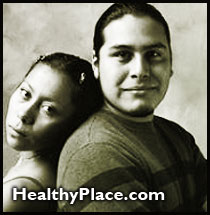 There have been numerous efforts, both government- and privately-funded, to develop plans and policies to assist the mentally ill minorities in the United States. With the recent influx of immigrants to the United States from poorer countries, it is vital to address their mental health care needs.
There have been numerous efforts, both government- and privately-funded, to develop plans and policies to assist the mentally ill minorities in the United States. With the recent influx of immigrants to the United States from poorer countries, it is vital to address their mental health care needs.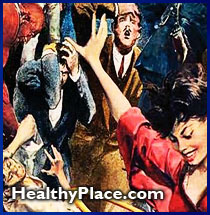 Mass psychogenic illness is when groups of people (such as a class in a school or workers in an office) start feeling sick at the same time even though there is no physical or environmental reason for them to be sick.
Mass psychogenic illness is when groups of people (such as a class in a school or workers in an office) start feeling sick at the same time even though there is no physical or environmental reason for them to be sick.

 The geriatric psychiatrist is a good ally when it's not clear whether the patient's problem is dementia, depression, or the complications of multiple physical illnesses in addition to dementia or depression.
The geriatric psychiatrist is a good ally when it's not clear whether the patient's problem is dementia, depression, or the complications of multiple physical illnesses in addition to dementia or depression.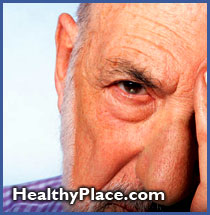 While anxiety disorders occur throughout the life-span, there are important differences in anxiety disorders occurring in older patients. Interestingly, most anxiety disorders are somewhat less common and often less severe in persons over 65 years of age; for example social phobia, agoraphobia, panic disorder, post-traumatic stress disorder and the more severe forms of obsessive compulsive disorder.
While anxiety disorders occur throughout the life-span, there are important differences in anxiety disorders occurring in older patients. Interestingly, most anxiety disorders are somewhat less common and often less severe in persons over 65 years of age; for example social phobia, agoraphobia, panic disorder, post-traumatic stress disorder and the more severe forms of obsessive compulsive disorder.